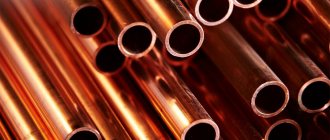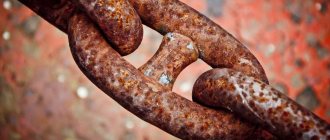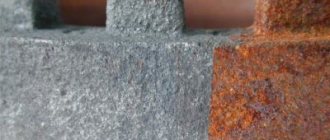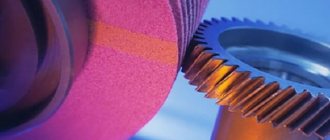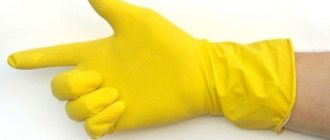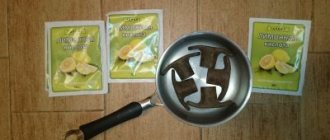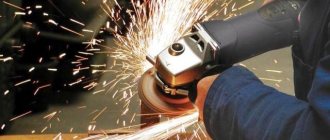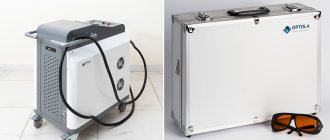How to create a rust effect on metal and other surfaces?
Today, the rust effect is one of the most popular finishing options for metal and other surfaces.
There are two simple ways to give a coating a hint of rust: imitation rusting and natural rusting of metal using special chemical reagents.
In this article we will look at the most effective ways to rust metal at home and during industrial processing.
Natural rust
As you know, any metal surface loses its original appearance over time, losing not only technical, but also external properties.
Metals are characterized by natural rusting, which occurs due to the negative impact of environmental factors.
If it is necessary to create natural rust on metal, you can simply speed up this process by using chemical reagents - their action is aimed at forming a layer of metal corrosion.
Before carrying out a chemical reaction, you need to make sure that the metal used is susceptible to corrosion. Rust appears only on metal surfaces that contain iron. Some metals are more resistant to corrosion - often these are chrome compounds or so-called stainless steel. Cast iron and wrought iron are also suitable for chemical rusting.
First method: cupric acid solution
One of the easiest ways to create natural rust is to use a copper-acid solution. Its manufacture does not require the presence of any specific reagents; the most important thing is to strictly follow the technical conditions and procedure for performing the operation:
- About sixty milliliters of hydrochloric acid is poured into a prepared (pre-cleaned) container. A prerequisite is the use of protective glasses and gloves made of thick rubber.
- Next, a small amount of copper (copper wire or coins) must be dissolved in hydrochloric acid, after which the solution must infuse for seven days to accelerate corrosion processes on the metal.
- Residues of copper should be removed from the resulting composition. Dilute the prepared copper-acid solution with water in the proportion: one part acid to fifty parts water.
- Next, the metal is cleaned (removal of the paint layer, plaster and other finishing materials), after which the surface is thoroughly washed with a soap solution.
- The copper-acid solution must be applied using a special spray gun or a regular construction brush. At the same time, follow all safety rules and pay special attention to room ventilation.
Approximately two hours after application, a rusty effect will appear on the surface. There is no need to wash off the mixture, since the composition will evaporate on its own after some time. If there is not enough rust formed, the procedure can be repeated in order to achieve the desired result.
Method Two: Vinegar and Bleach
There is another way to make rust easily and quickly at home - using vinegar and bleach.
This method is suitable only for surfaces that were not finished with a primer or various sealing compounds.
The combination of vinegar and bleach gives the maximum effect of natural rusting if the metal products contain tin or iron.
Let's look at the instructions for coating a metal product with rust:
- At the first stage, carefully inspect the object for the presence of extraneous traces of old coatings, clean if necessary.
- Next, mix one part vinegar and two parts bleach in a prepared container. The volume of the mixture may vary depending on the size of the item you are going to rust.
- Place the metal product in the solution for thirty minutes - during this period of time, a cracked layer of rust will form on the surface of the object.
- Wipe up any remaining mixture with a regular paper towel, and discard any remaining vinegar and bleach.
- Once the product is completely dry, remove as much rust as necessary (depending on the desired result). Some people prefer a thick layer of rusty coating, while others prefer superficial corrosion on metal and other surfaces.
To fix the resulting effect on the object, use a special primer in an aerosol or a matte sealant in the form of a spray.
On video: three simple ways to create noble rust.
Imitation of natural rust on metal
Is it possible to rust metal without distorting the natural structure of the material? In such cases, imitation of rusting is used using a special coloring composition or rust film. Please note that you can give the rust effect to both metal and other materials, such as wood.
Paints and pigments
To make a product rusty, acrylic-based rust paint is most often used. Now such a mixture can be purchased at any hardware store.
How is rust paint created? Rusty shades are created through the interaction of brown, yellow and red pigments.
Blue pigment can also be added to give the coating greater depth and color saturation.
There is also a natural pigment, which, when used alone, gives the appearance that the surface has rusted over time, and not as a result of decorative finishing work - this is iron lead or ocher (a mixture of iron oxide hydrate and clay).
Natural ocher is not used for painting metal objects. It is only a fundamental component and is added to paints and varnishes (paints, primers, enamels).
Regardless of what kind of paint you are going to use - purchased or prepared yourself based on red lead, the mixture should be applied to a cleaned and degreased surface. To create a realistic rust texture, paint can be applied using a porous sponge or dry brush (to simulate streaks).
Simulating film
In building and finishing materials stores you can find self-adhesive film with a picture of rust. This is also a good option that will allow you to quickly and without any problems get the desired effect. However, it is recommended to glue such a film on a perfectly flat surface, otherwise air bubbles may appear, or in some places the film will simply peel off.
Most often, rust imitation film is used by car owners who want to tune their car.
How to use the film:
- The surface that needs to be decorated must be degreased (with alcohol or a special degreaser).
- Attach the film to the base and mark the areas or contours that need to be cut out.
- Detach the film from the backing and begin gluing the piece in the middle, gradually leveling it towards the edges.
Pigments and household products (25 photos)
How to speed up the rusting of metal - Metalworker's Guide
Due to the fact that many objects in the apartment are metal or have metal parts, almost every person is ever faced with the need to wash off rust.
Corrosion does not bode well. Guys are worried that it will appear on the car body, the right tool. Girls are worried about spoons, pans and other kitchen utensils.
If you find that something is covered with a brown-orange coating, do not rush to throw it away. By understanding how to remove rust from metal, you can save money on purchasing new items. You can try to stop the corrosive effects using available means.
Causes of corrosion
If a metal that contains certain additives or impurities (for example, carbon) comes into contact with liquid, air or other powerful oxidizing agent/acid, it becomes corrosive. If salt (sea water) is present in the liquid, metal corrosion increases. This is due to electrochemical reactions. Pure iron is quite resistant to the influence of water and air.
As with other metals, the passivation layer provides protection against oxidation. This layer turns into rust due to the combined effects of 2 reagents.
Other corrosive factors include sulfur dioxide and carbon dioxide. Under such aggressive conditions, different types of iron hydroxide appear.
As hydroxide forms and moves away from the surface, the next layer of metal is subject to corrosion.
Metal corrosion will end only when the iron is destroyed or the aggressive factors are eliminated.
Methods for removing rust at home
How to clean rust from metal? This question has been asked by many people for a long time.
There are various folk methods that make it possible to remove rust from metal at home.
The effectiveness of such methods does not allow them to cease to be popular. It is possible to remove rust from both metal and fabric.
Table acetic acid
Vinegar is an excellent way to combat corrosion. It dissolves brown plaque flakes. If you need to remove rust from a small item (coin, knife, pliers, key, jewelry), keep it in table acetic acid for a couple of hours.
After the crusty layer has softened, remove it with a crumpled piece of aluminum foil. It has enough rigidity to remove rust from metal. At the same time, the foil does not deform the coating of the object, which cannot be said about a metal brush.
If rust appears on a large object (hacksaw, shovel, ladder, fittings), you need to thoroughly wet a cloth with acetic acid and wipe the rusted parts with it. After some time, the plaque will soften and it will be possible to remove rust from the metal using a special brush.
Lime and salt
Acid with salt is deservedly considered one of the best rust removers. This is the second most common method of eliminating rye and stopping the corrosive effects. Cut the lime in half and squeeze as much juice as you can onto the rusty parts. Sprinkle the soaked areas with salt.
Don't throw away the lime peel. It will serve as a “sponge” that removes softened rust. After two hours of etching, try to scrub off the corrosion. If it does not give in, wait a while. You can use lemon juice instead of lime, but lime will help dissolve the problem much more effectively.
Soda
Make a baking soda mixture by mixing baking soda with water. Clear proportions are not defined. The mixture should be similar to rich sour cream or toothpaste. The finished mixture is placed in a thin layer on the rust and waited for two to three hours.
Do not think that after this period the corrosion will disappear and the metal will shine. To remove rust from metal, use a toothbrush and a piece of aluminum foil. After treating the rust, corrosion will be eliminated.
Potatoes and laundry soap
Using a similar method, it is possible to remove rust from metal at home, both small and large things. The potato tuber must be cut in half, and the cut should be wiped with laundry soap.
After this, place the potato on the rusted part. When in contact with soap and potatoes, corrosion starts a chemical reaction. After a couple of hours, you can try to wash off the brown deposits with a stream of hot water.
Lemon acid
Make a solution of citric acid (three packets per liter of water). Boil the finished mixture and turn off the gas stove.
Place rusty things (screwdrivers, pliers, screws, nails, etc.) in boiling water. You will immediately see the liquid in the container bubble.
Treating rust by soaking requires at least eight hours. Softened rust is removed with a brush or sponge.
Oxalic acid
It is necessary to remove rust from metal before painting in a ventilated area. Be careful! Use rubber gloves, special glasses, and a robe. If acid gets on your skin or eyes, you will get very severe burns.
How to rust metal at home
Humidity, yes. What else?
and an oxidizing agent, of course.
If a piece of iron needs to “rust,” then you can attach copper crap to it.
How to make rust on metal and wood surfaces
Paint guru➣Special materials➣Corrosion➣
In recent years, rusty color has become increasingly popular. You can achieve this color in one of two ways: imitate rusting or rust the metal naturally. How to make rust in various ways will be discussed below.
Natural rust
This article does not take into account the natural rusting of metal, which gradually occurs to it under the influence of the environment. Natural rust can be accelerated by a chemical reaction that causes corrosion of the metal.
First of all, you need to make sure that the metal you want to rust is susceptible to corrosion. Metals containing iron are susceptible to rust. However, many materials are resistant to rust, such as stainless steel or chrome alloys. Wrought iron and cast iron are susceptible to corrosion.
Copper acid solution
Instructions:
- Pour 60 milliliters of hydrochloric acid (hydrochloric acid) into the container. During the process, be sure to use protective gloves and goggles.
- Dissolve some copper (copper wire, coins, etc.) in acid. The container should not be closed too tightly, as the reaction will produce gases inside. Thus, after about 7 days we obtain a solution that provokes corrosion processes.
- Remove copper residues from the acid. We dilute the copper-acid solution with water in the following proportion: add 50 parts of water to 1 part acid.
- We clean the metal that will rust from paint. Wash the surface with soap and water.
- Apply a thin layer of acid to the metal. This can be done using a spray bottle or brush. Let the material dry in the fresh air. At the same time, as before, do not forget about protective measures (gloves and goggles), as well as good ventilation of the room.
- After about an hour, visible rust will appear on the metal surface. There is no need to rinse off the solution, as it will gradually evaporate naturally. If the rust that has formed seems insufficient, you can treat the surface again.
Methods for restoring rusty iron
As a result of exposure of iron to air and other substances, it oxidizes. There is an electrical, chemical, electrochemical reaction, after which rust is formed. Various methods are used to clean rusty iron and further protect it.
Rust control methods
Iron corrosion damages industrial equipment and causes many losses. To prevent this from happening, you need to properly treat the surface with high-quality paints and varnishes. The abrasion-resistant cleaning method is considered the most effective.
There are 3 ways to prevent rust stains:
- Structural.
- Passive.
- Active.
To prevent corrosion, structural stainless steel is used. When equipment is designed, all parts are protected from the effects of a corrosive environment with adhesives, sealants, and elastic gaskets.
With the active method, the parts are exposed to an electric field using equipment that supplies direct current. To increase the electrode potential of iron products, a suitable voltage is selected.
Sometimes sacrificial anodes taken from more active elements are used; this method is called passive. Metal parts are protected by a special anti-corrosion coating.
Oxygen corrosion occurs on tin-plated parts. Paint, enamel or polymers are used to protect exposed metal from water and air. Often steel is coated with tin, nickel, zinc, and chromium. The base material remains protected even after partial destruction of the protective layer. Zinc has a more negative potential, so it rusts first.
Tin cans are made from tin. When the tin layer is deformed, the iron quickly rusts, since the potential for such protection is more positive. The metal is protected from corrosion by chrome plating.
Zinc and magnesium have a more negative potential, making them excellent for coating metals. This method of protection is called cathodic; it prevents the development of a corrosive coating on many products. Zinc plates are installed on marine vessels, underground communications, and other equipment to protect the hull.
An oxide film is formed on the zinc and magnesium layers, which inhibits the destructive process. If you add a little chromium to the steel, the products will be protected.
Thermal spraying is used to combat corrosion and helps restore various equipment. Using special equipment, another metal is applied to the surface, resulting in corrosion occurring slowly.
Metals that are to be used in an aggressive environment are treated with thermal diffusion zinc coating. This method provides the greatest protection; the coating does not peel off or chip after impact or deformation.
The metals are treated with cadmium, which protects well even in sea water. Cadmium is highly toxic and is therefore not used often.
Treatment with chemicals
Everyone understands why iron parts rust. We list the categories of chemical reagents that help get rid of corrosive formations:
- Rust converters.
- Acids.
Acids are solvents consisting of orthophosphates that help restore rusting products. The technology for using acid is simple. The metal must be cleaned of dirt and dust and treated with acid using a silicone brush.
The chemical interacts with the damaged surface for 30 minutes, after cleaning the product is wiped dry. The acid should not affect the skin, eyes, or mucous membranes, therefore, during such treatment it is necessary to wear special clothing. The orthophosphate mixture has the following advantages:
- Gentle effect on iron.
- Removing rusty deposits.
- Preventing new corrosion.
The entire surface of the metal product is treated with the converter. Active substances create a protective anti-corrosion layer that prevents its development.
Popular converters:
- Berner - for protecting bolts and nuts that are difficult to unscrew.
- BCH-1 neutralizes rust on damaged areas and can be wiped off with a regular rag.
- "Zinkor" cleans from corrosion and prevents further destruction.
- B-52 is a gel converter that helps get rid of different types of rust stains.
- SF-1 - it is used to process cast iron, zinc, aluminum, it prolongs the service life of iron objects for a long time.
Most anti-corrosion compounds are made from toxic components, so you need to protect yourself with respirators, gloves, and goggles.
Application of anti-corrosion compounds
Rocket Chemical company supplies high-quality anti-corrosion products to the domestic market. We list the most popular products:
- Potent inhibitor. After treatment, iron objects do not rust for a year in an aggressive environment.
- Lithium grease – for protection and prevention. It is used to process door hinges, iron cables, chains, and various mechanisms. The protective layer is not washed off by rain.
- Silicone sealant covers metal products with plastic or rubber elements.
- Anti-corrosion spray - for treating hard-to-reach areas. The sprayer allows for deep penetration into various mechanisms. Prevents the recurrence of rusty plaque.
- The spray for removing rust stains is made from non-toxic elements. It is used to clean building materials, household appliances, knives, etc. – valid for 5 hours, after which the item is wiped or washed.
Iron is most resistant to corrosion in conditions of minimal humidity.
Folk remedies
You can clean metal using improvised materials:
- Lemon and vinegar help get rid of light plaque. The ingredients are mixed in equal proportions. After processing the iron, you need to wait 2 hours. Then wash off and wipe dry.
- Potatoes have a destructive effect on rusty plaque. Potatoes are cut, salted well, and applied to the spots. Oxidation products are washed off from products.
- Baking soda is highly effective. The powder is diluted with water until a thick mixture is formed. You need to wait 30 minutes, then wipe the surface dry and remove any remaining dirt.
It is not easy to treat rust so that the iron does not deteriorate. You will have to pay a lot of money for quality products. To achieve an ideal result after cleaning, you will have to organize special conditions. Only large industrial enterprises can afford this.
Useful materials
Vinegar helps fight corrosion and removes brown deposits. It can be used to clean a coin, a knife blade, a key, or jewelry.
Lime and salt are the most effective combination. The product is processed with juice, salted, and peeled with lime peel.
Oxalic acid is an aggressive agent; the vapors released as a result of a chemical reaction affect the mucous membrane of the respiratory tract, so protection is necessary. The room is ventilated. The acid is dissolved in water, an object is placed there, and the plaque is removed with an old toothbrush.
How to speed up the rusting of metal?
In the first part of our article, we talked about the types of rust and the reasons for its appearance. Now it’s worth considering options for “fighting” it.
What accelerates the destruction of metal? The environment, polluted by factors of technological progress, affects the metal, destroying it. It is impossible to completely eliminate this influence, but ways can be found to slow down the rusting process.
There are three main groups of methods that can slow down the rate of metal destruction:
- Structural
- Active
- Passive
Structural
Initially, what you should pay attention to is internal protection: the chemical composition and structure of the metal. The addition of impurities such as nickel and titanium during steel production increases its corrosion resistance. This process is called alloying. When chromium is added, an oxide film is formed on the surface of the metal, transferring the metal to a passive state.
Another type of alloy steel - corten, at first glance appears to be bronze, although in reality it is simply rusty - after the formation of a layer of rust, its oxide film is no longer washed away by water and the destruction process stops. When copper is added to a metal alloy, corrosion resistance increases several times.
Active
A method in which the potential of the electric field on the surface of a metal is changed. This type of protection is also called electrochemical protection. This method can be divided into two large groups: cathodic protection and anodic.
With cathodic protection, a change in potential is achieved by connecting the protected object to a current source. In this case, the product will serve as a cathode, and auxiliary inert electrodes will serve as the anode. They are also called “sacrificial” anodes. They consist of a more active material that will break down, thereby protecting our product.
Anodic protection is based on the same principle as cathodic protection. The difference is that the electrical potential of the structure increases (becomes more positive) and the metal becomes passive. As a result, the corrosion rate is significantly reduced.
The electrochemical method is used in cases where it is not possible to renew the protective coating (metal, paint). For example, in underground pipelines or on the bottoms of sea vessels, on drilling platforms and large pile foundations.
Passive
The method includes such activities as processing with fat, oil, various metals and other materials. For convenience, we will divide them into metal and non-metallic coatings.
Protection by non-metallic coatings
Paints and polymers form a protective layer on the metal surface, thereby eliminating the possibility of contact with water and aggressive environments. The convenience of paintwork materials is that the painting process is quite simple and economical. If the coating is damaged, it can always be “touched up” right on the spot.
Polymers - epoxy resins, polyvinyl chloride, polyethylene - can act as protective coatings.
We will look at the types of paints and methods of applying them in more detail in the next article.
Protecting iron with metal coatings
Among metal coatings, two types can be distinguished: protective (zinc, aluminum and cadmium) and corrosion-resistant (plating with silver, copper, nickel, chromium and lead). Thus, the first group of metals has greater electronegativity with respect to iron, the second - electropositivity.
Tin coating and galvanizing are very popular, since the application technology is quite simple. A more effective solution would be an aluminum coating, which is more resistant to aggressive substances.
An important detail when using passive methods is that corrosion protection depends 80% on proper preparation of the metal, and 20% on the quality of the materials used and the method of their application.
An easy and quick means of preliminary surface preparation is mechanical abrasive treatment. A more expensive method is laser cleaning, which uses pulses to remove dirt, oxides and other contaminants. The most common cleaning option is chemical.
Additional protection options
Finally, one more aspect is worth mentioning. All this time we have been considering the possibilities of protecting metal from the environment, but did not take into account the fact that the aggressiveness of the environment can also be reduced.
You can protect yourself from electrochemical destruction of metal by using non-metallic inhibitors. It is necessary to minimize the number of elements causing an electrochemical reaction.
In practice, such actions will include reducing soil acidity and changing the composition of aqueous media in direct contact with the metal. For example, in the electric power industry it is practiced to purify water from chlorides.
To reduce corrosion of some metal products (copper, brass, zinc, etc.), oxygen and carbon dioxide are removed from liquids.
How to create a rust effect on metal and other surfaces?
Today, the rust effect is one of the most popular finishing options for metal and other surfaces.
There are two simple ways to give a coating a hint of rust: imitation rusting and natural rusting of metal using special chemical reagents.
In this article we will look at the most effective ways to rust metal at home and during industrial processing.
Simple things are complicated. "sleeping steel" how to lubricate rusted bolts or not with wd-40 alone...
Dedicated to all those who are desperate and have lost hope... unscrew the rusty nut!
Spring has definitely arrived on the streets of our cities. It got warmer and people happily began to give preference to their real iron friends, at least for a while forgetting about tablets and smartphones. Cyclists, motorcyclists and many other lovers of seasonal means of transportation took out their belongings and suddenly discovered that something was rusty, something could not be unscrewed, etc. and so on.
I confess that I am one of these who discovered
